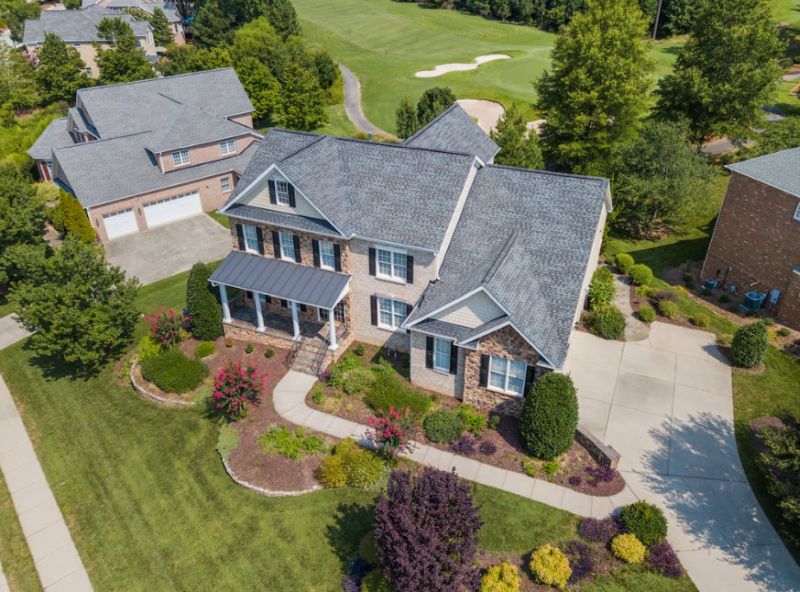When considering new roofing materials, many homeowners prioritize durability and cost-effectiveness. However, there are several eco-friendly roofing options that cater to different budgets, materials, personal preferences, and home designs. According to Indianapolis roofers, it’s important to carefully compare your roofing options and choose the one that best meets your needs. Consider factors such as the warranty, fire resistance, and the ability to withstand heavy storms and harsh weather.
It may also be necessary to obtain a building permit and pass an inspection before replacing your roof. Check with your local building department to ensure the selected material is approved. For example, some eco-friendly roofing materials, such as clay tiles or slate, may require a more robust support frame than others. Remember that roofing materials have different properties and may be better suited to certain buildings or climates. Therefore, it’s essential to know the seven most common eco-friendly roofing materials listed in this article for your home that will keep the environment safe and protect your home.
What Makes a Roof Eco-Friendly?
Before identifying what eco-friendly roofs are available on the market, it helps to understand how they are considered environmentally friendly. Roofing material should not only be made from sustainable sources and produced sustainably, but it should also have excellent long-term performance and be disposed of properly at the end of its lifespan. Critical factors to consider when evaluating the environmental impact of a roofing material are its durability, ability to resist heat absorption, and reflectivity. If you’re searching for sustainable roofing options, consulting a professional roofing contractor in Fort Collins CO can help you find eco-friendly solutions tailored to your needs. For more information on durable and environmentally friendly roofing choices, visit Severe Weather Roofing.
1. Sustainability Standards in Roofing Materials
The sustainability of a material is primarily determined by its source. A sustainable material can be produced without depleting or harming the resource it comes from and without causing significant harm to the environment during the sourcing process. For example, roofing materials derived from fossil fuels or mined materials are not considered sustainable because they are derived from finite resources that cannot be replaced.
2. The “Cool Roof”
Cool roofs are eco-friendly and made from white glue and gravel. This combination helps to reflect sunlight, reducing the amount of heat that enters the building and decreasing the need for air conditioning. Cool roofs often last longer than traditional ones due to their unique materials, which can be especially beneficial in hot climates.
3. Rubber Roofs
As the name implies, rubber roofs are made of rubber, but more specifically, they are made of recycled steel-belted tires and coated with ground slate for added texture. They are durable for being made of recycled materials, can withstand harsh weather conditions, and have a lifespan of at least 50 years.
4. Green Roofs
Green roofs are flat or low-sloped roofs with vegetation, such as grass or small plants, partially or fully covering the top of a residential property. They also have a synthetic waterproof membrane and a growing medium (such as soil and inorganic elements). The advantages of green roofs include their ability to absorb rainwater, reduce runoff, and provide insulation.
5. Clay Tile Roofs
Roofs made out of clay tile are known to be long-lasting, eco-friendly, and energy efficient. Their design allows hot air to escape rather than becoming trapped, making them practical for insulation and maintaining a comfortable temperature in a home.
6. Solar Roofs
Solar roofing is a relatively new type of eco-friendly roofing solution that involves installing solar panels or using tiles that generate solar power as part of the roof. While the initial cost of installing solar roofing can be high, it can save homeowners a significant amount of money on electricity bills over time and are most effective in areas that receive a lot of sunlight.
7. Metal Roofs
Metal roofs are known for their attractive appearance and durability. They can be recycled even when they can no longer be used for roofing material. However, they are semi-sustainable because they are made of materials derived from the earth. Their post-use application enables them to gain a secondary utility when recycled, further extending their material use.
8. Slate Roofs
Slate roofs are a long-lasting and attractive roofing material made from stone and can last up to 100 years without needing to be replaced. It is also eco-friendly and resistant to fire. Energy efficiency can be further improved by adding special coatings to the tiles.
Article Submitted By Community Writer




